In this kit:
- Book Summary Page (Online & Printable Kit)
- Main Characters Page (Online & Printable Kit)
- Discussion Questions Page (Online & Printable Kit)
- Book Quotes Page (Online & Printable Kit)
- Icebreaker Game: (Printable kit only)
- About the Author Page (Online & Printable Kit)
- Historical Facts Surrounding the Book (Online & Printable Kit)
- List of Podcasts and Videos about this Book (Online only)
- Meeting Decoration Ideas (Online & Printable Kit)
- Meeting Decorations Printable Images (Printable kit only)
- Meeting Menu Ideas (Online & Printable Kit)
- Meeting Food Recipes (Printable kit only)
- Shakespearean printable decoration images (Printable kit only)
- Bookmarks for My Friends (Printable kit only)
- Bookmarks for Readers With Wrinkles (Printable kit only)

My Friends is Fredrik Backman's deeply moving 2025 novel that weaves together two timelines to tell an extraordinary story about friendship, art, and the enduring power of human connection. The narrative begins with Louisa, a troubled 17-year-old foster child who sneaks into an art auction to see "The One of the Sea," a painting she has loved since childhood. When she accidentally collides with the dying artist who created the masterpiece 25 years earlier, her life takes an unexpected turn.
The story unfolds across two interconnected timelines. In the present day, Louisa finds herself in possession of the valuable painting after the artist's death, embarking on a cross-country journey with Ted, now in his forties and one of the artist's closest friends. Ted becomes the storyteller, revealing the tragic and beautiful history behind the artwork that has captivated Louisa for so long.
The second timeline transports readers to a seaside town 25 years earlier, where four teenagers found refuge from their traumatic home lives by spending their days on an abandoned pier. The group consists of the unnamed artist (known only as C. Jat), Ted, Joar, and Ali—all bonded by shared experiences of poverty, abuse, and neglect. Ted's father is dying of terminal cancer while his brother bullies him mercilessly. Joar lives in terror of his abusive, alcoholic father and contemplates murder as the only escape. Ali, fierce and independent, tries to avoid the violent men in her unstable home. The artist, a prodigy battling severe depression and social anxiety, finds solace only in his art but struggles with crippling self-doubt.
These four "misfits" create an unbreakable bond through their daily rituals at the pier, where they swim, talk, and dream of escape. Each evening they part with the call "Tomorrow!" and greet each other the next day with "Here!" - a simple but profound affirmation of their commitment to each other and to survival. The artist finds mentorship in Christian, the school janitor who recognizes his talent and encourages him to enter a local art contest with what would become "The One of the Sea."
The painting itself becomes a central character in the story, representing not just artistic achievement but the preservation of a perfect moment in time—a summer of laughter, friendship, and hope despite overwhelming circumstances. As Backman reveals, the painting is not actually of the sea but of laughter itself, capturing the essence of these four friends in their most precious moments together.
The novel explores profound themes of trauma, healing, and the way art can serve as both a coping mechanism and a bridge between past and present. Through Louisa's journey, readers witness how the bonds formed in adolescence can ripple across decades, touching the lives of strangers and creating new forms of chosen family. The story examines the concept of "inherited trauma" and how childhood experiences shape the adults we become, while also celebrating the redemptive power of human connection.
Backman's masterful storytelling alternates between heartbreaking and humorous moments, never allowing readers to forget that even in the darkest circumstances, joy and beauty can emerge. The novel builds to a climactic revelation about the fate of the four friends, particularly the mysterious circumstances surrounding Joar and the knife he carried throughout that fateful summer. The resolution ties together past and present in a way that honors both the pain and the healing that comes with genuine human connection.
My Friends stands as perhaps Backman's most emotionally complex work, examining how art becomes "what we leave of ourselves in other people" and how the love between friends can transcend time, circumstance, and even death. It's a testament to the idea that some friendships are so powerful they can change not just the lives of those involved but the lives of complete strangers decades later.

Louisa
Louisa is a fierce seventeen-year-old rebel whose spray-painted defiance against the world masks a heart shattered by the loss of her best friend Fish. She carries a stolen postcard of a famous painting like a talisman, the first beautiful thing she ever dared to touch in a life marked by foster homes and abandonment. Beneath her angry exterior burns the soul of an artist who sees beauty where others see destruction, and who discovers that grief can be transformed into something transcendent through the unexpected kindness of strangers.
Ted
Ted is a gentle, bookish soul who spent his childhood mourning his father's illness while enduring merciless bullying at school for being different. Now an adult, he has traded his dreams of writing for the quiet dignity of caring for others, becoming the reluctant keeper of his dying friend's final wishes. His soft heart carries the weight of every goodbye, yet he possesses an extraordinary capacity to recognize kindred spirits in the most unlikely places.
C. Jat (The Artist/Kimkim)
C. Jat is a world-renowned artist whose fame cannot heal the wounds of a childhood spent hoarding sleeping pills and hiding his extraordinary gift from a world that demanded conformity. Born with so much beauty inside him that it felt like an act of rebellion against his ugly surroundings, he wielded his art as a declaration of war against a world full of sledgehammers. In his final days, he finds redemption not in galleries or critics' praise, but in the recognition that his masterpiece has become a bridge between one broken teenager's grief and another's hope.
Joar
Joar is the smallest member of the group with the heart of a lion, whose fierce loyalty and willingness to fight for what's right burns brighter than his diminutive stature would suggest. He carries the heavy burden of witnessing domestic violence at home while serving as the catalyst who pushes his friends toward their destinies, understanding that sometimes love means letting go. His emotional complexity stems from a deep well of guilt about his family's trauma, yet he possesses an intuitive wisdom that helps others find their courage when his own feels depleted.
Ali
Ali is a spirited, independent girl who has mastered the art of coming home late to avoid the chaos of her abusive household, yet never loses her fearless determination to embrace life on her own terms. She joins the group as the lone female voice, bringing a fierce love and unwavering bravery that helps anchor the boys through their darkest moments. Her free spirit serves as both shield and sword, protecting her chosen family while challenging them to see beyond the limitations their circumstances have imposed.
Fish
Fish was Louisa's "human," the one person who made her feel truly seen and understood in a world that had consistently failed to provide either safety or love. Though gone before the story begins, Fish's presence permeates every page through Louisa's profound grief and the postcard that becomes her connection to hope. Fish represents the transformative power of unconditional friendship—the kind that leaves an indelible mark on a soul even after death has claimed the physical form.
Christian
Christian is a school janitor whose artistic eye recognizes extraordinary talent in a scared teenager, offering the kind of validation that can change the trajectory of a life. He serves as an unlikely mentor who understands that art is not just expression but homeland—a place where kindred spirits recognize each other across time and circumstance. His quiet wisdom about the nature of creativity and belonging becomes the foundation upon which a world-famous artist builds his legacy.
The Artist's Mother
She is a woman crushed by the weight of trying to make her extraordinary son "normal" in a world that fears difference, representing the tragic disconnect between parental love and understanding. Her attempts to dim her child's brilliance stem from a misguided desire to protect him from a world she knows will be cruel to those who dare to be different. Though her actions wound deeply, she embodies the complex reality that sometimes those who love us most can inflict the greatest damage through their own fears and limitations.
Louisa's Foster Parents
They exist as a collective representation of institutional care that provides shelter but not sanctuary, highlighting the difference between housing a child and truly seeing them. These unnamed guardians cycle through Louisa's life like seasonal weather—some harsh, some indifferent, none lasting long enough to understand the depth of her need for belonging. Their presence serves as a stark contrast to the chosen family bonds that ultimately heal and transform.
The Art World Figures
They represent the superficial commercialization of beauty, reducing profound emotional expression to market value and auction prices. These gallery owners, critics, and collectors hover around C. Jat's work like moths to flame, drawn to the monetary worth while remaining blind to the human story that gives the art its power. Their presence serves as a reminder that sometimes the most valuable things—friendship, understanding, hope—cannot be bought or sold, only freely given and received.

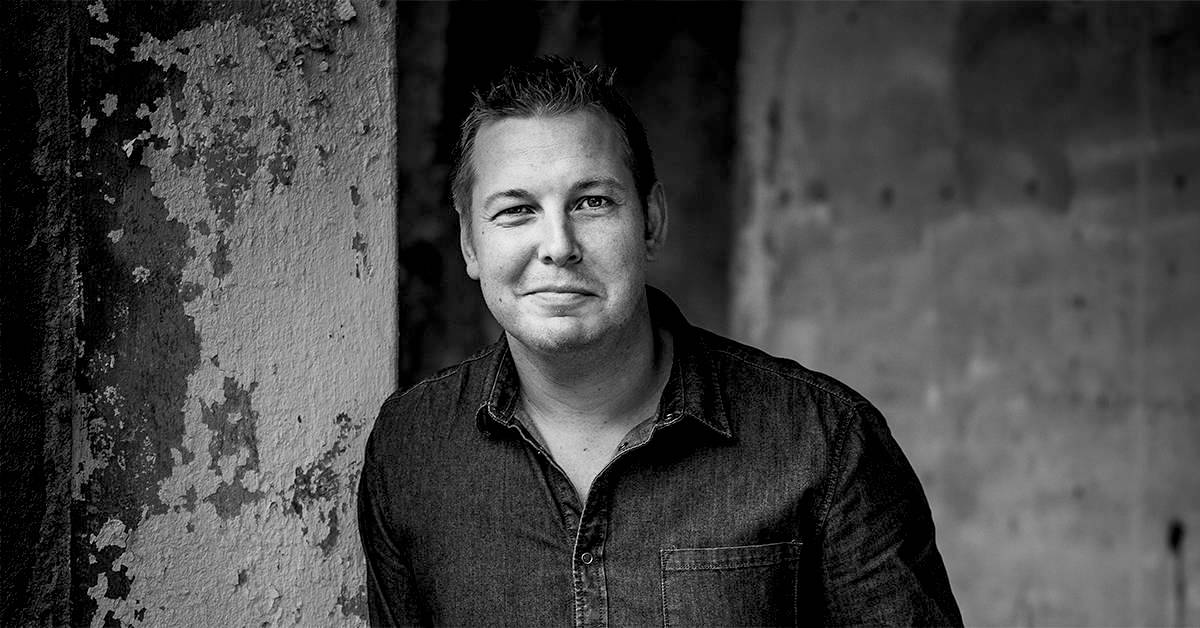
Fredrik Backman (born June 2, 1981, in Stockholm, Sweden), is a celebrated Swedish author, blogger, and columnist. He rose to international acclaim with his debut novel, A Man Called Ove, which highlighted his trademark blend of humor and emotional depth. Backman’s stories—always deeply human, relatable, and insightful—explore themes like loneliness, grief, found family, and the power of community.
Born and raised in Helsingborg, Backman worked as a forklift driver and waiter before turning to writing, first sharing reflections and witty essays in Swedish newspapers and blogs. His subsequent novels, including My Grandmother Asked Me to Tell You She’s Sorry, Beartown, Us Against You, and Anxious People, have won international awards and been translated into over forty languages. Known for vivid characters, his works often draw on his own experiences with anxiety and the profound impact of art and friendship in overcoming life’s biggest hurdles.
In 2025’s My Friends, Backman weaves his most personal novel, informed by struggles with confidence and an enduring belief in the transformative power of relationships. He lives with his family in Stockholm and continues to interact with readers worldwide via social media and literature festivals.

Here are several notable quotes from My Friends.
"The world is full of miracles, but none greater than how far a young person can be carried by someone else's belief in them."
- Spoken by: Narrator/The Artist
- Context: Early reflection on influence and encouragement.
"Adults always think they can protect children by stopping them from going to dangerous places, but every teenager knows that's pointless, because the most dangerous place on earth is inside us."
- Spoken by: Narrator
- Context: Early chapters, exploring adolescence and interior pain.
"Being human is to grieve constantly."
- Spoken by: Narrator
- Context:: Ongoing theme throughout the novel; central to meditations on loss.
"He was good at seeing beauty in everything, that happens if you’re no good at seeing it in yourself."
- Speaker: About "the artist"
- Context: Reflection on the artist’s character.
"Do you know what the biggest threat to women's health is? 'Men,' Louisa says, because all women know that."
- Speaker: Louisa
- Context: Conversation on gender, teenage wisdom.
"Nothing weighs more than someone else's belief in you."
- Speaker: Narrator/The Artist
- Context: Thematically appears in sections about relationships and self-worth.
"He feels like telling her that the artist didn’t give her the painting because it was his inheritance, he gave it to her because he realized that she was the inheritance. Art is what we leave of ourselves in other people."
- Speaker: Reflection from a principal character, likely Ted
- Context: Discussing legacy and meaning of art.
"Adults often think that self-confidence is something a child learns, but little kids are by their nature always invincible, it’s self-doubt that needs to be taught."
- Speaker: Narrator
- Context: Reflections on childhood.
"Surely taking life for granted is the whole point of being here, because what else are we doing? We're a bunch of lonely apes on a rock in the universe, our breath consists of eighty percent nitrogen, twenty percent oxygen, and one hundred percent anxiety."
- Speaker: Narrator
- Context: Philosophical aside about existence.
"He would often try to think that perhaps that has to be the case: that our teenage years have to simultaneously be the brightest light and the darkest depths, because that’s how we learn to figure out our horizons."
- Speaker: About adolescence, attributed to central coming-of-age themes in the novel
- Context: Reflection on the meaning of adolescence.

Swedish Setting & Social Issues
The narrative is set in a coastal Swedish town, drawing on real concerns of poverty, mental health, and bullying facing youth in Scandinavian society.
Rise of Contemporary Art
The One of the Sea painting’s prominence references the late-20th-century rise in value of contemporary European art and increased recognition of outsider artists.
LGBTQ Rights in Scandinavia
Ted’s struggles as a gay teen allude to changing views and rights for LGBTQ individuals in Sweden from the 1990s onward.
Immigrant Communities
References to family dynamics and outsider status reflect 1990s-2000s Swedish waves of immigration and shifting national identity.
Foster Care System
Louisa’s background highlights challenges within Sweden’s foster care and social protection systems in the late 20th and early 21st centuries.
Mental Health Awareness
Multiple characters’ experiences showcase broader European movements to destigmatize depression, trauma, and therapy from the 1990s to present.
Rise of “Found Family” Culture
The novel embodies a growing cultural emphasis on communities of choice over strictly biological family ties, a social trend gaining visibility in the 2000s.
Swedish Art Education
Kimkim’s chance at art school mirrors the Swedish government’s historical investment in arts access and community arts programs.
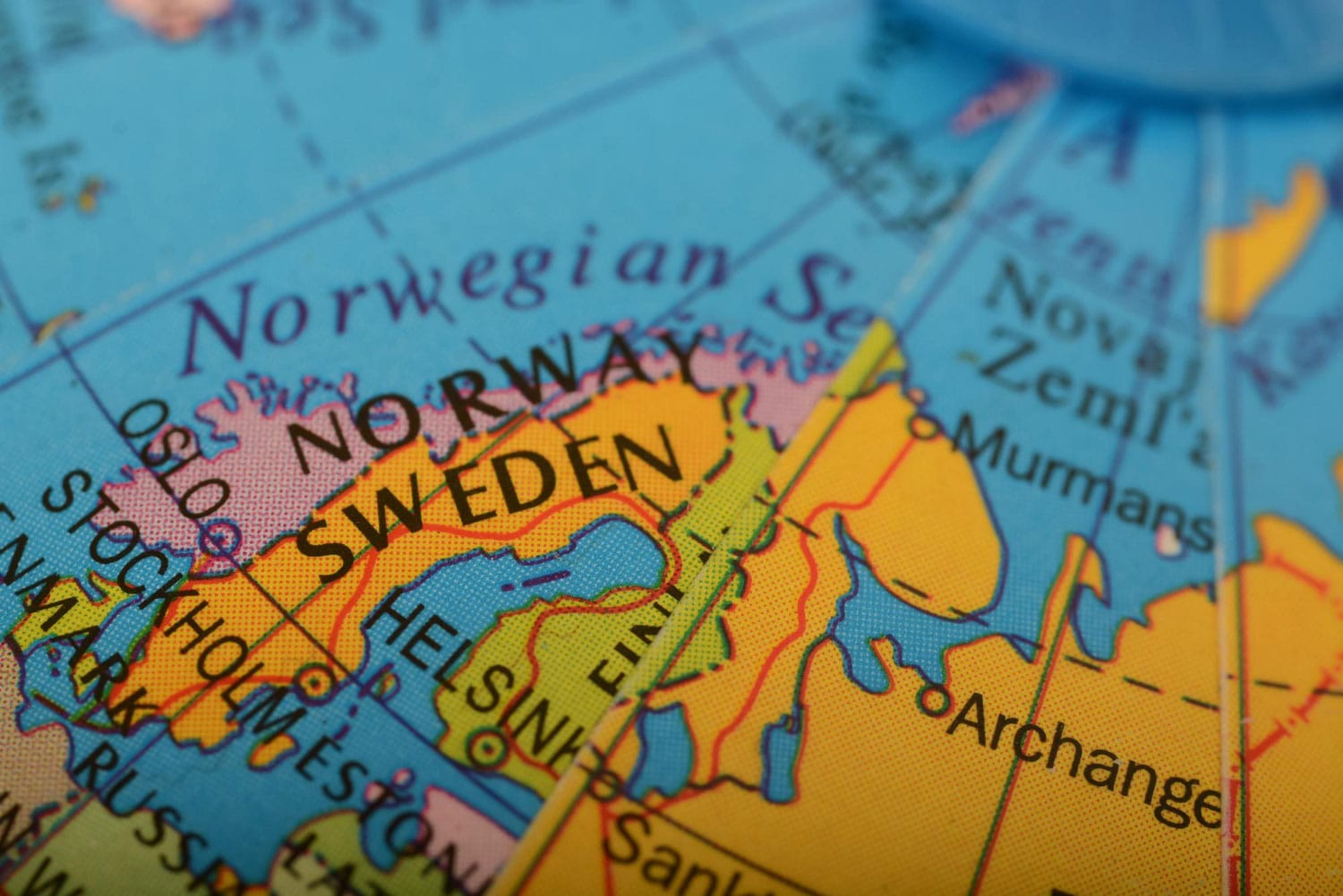
Role of Water in Swedish Life
The recurring motif of the sea and water stems from Sweden’s geography and cultural identity.

These questions are designed to encourage participants to think deeply, make personal connections, and explore the literary craft within the book. It is recommended that you choose 8-10 questions that you think would best suit your group. The following questions are intended to spark in-depth and lively conversation during your My Friends book club meeting:
- What does the painting The One of the Sea symbolize to different characters at various points in the novel?
- How does Backman use humor to balance the darker themes of trauma, grief, and loss throughout the book?
- In what ways does the concept of "found family" play a defining role in the lives of the main characters?
- Discuss how each main character copes with adversity and what art means to them personally.
- Which character did you relate to most, and why?
- How do past traumas continue to impact the friends’ adult lives after their summer together?
- The artist’s name is not revealed immediately. How did this mystery affect your understanding of the story?
- What is the role of water and the abandoned pier as symbols in the novel?
- How does Louisa’s journey with Ted echo the friendships of the past?
- Which moment was most emotionally powerful for you reading the book, and why?
- Many characters experience both loyalty and betrayal. Discuss examples and their consequences.
- In your opinion, does the novel have a happy ending? Why or why not?
- How do gender and class impact characters’ experiences and opportunities?
- In what ways do parents (present or absent) influence the trajectories of Ted, Joar, Kimkim, and Ali?
- Consider the quote, "The most dangerous place on earth is inside us." What does this mean in the context of the story?
- How is art depicted as both healing and painful in the book?
- Which scene evokes the strongest sense of place, and how does Backman achieve this?
- How does Backman develop suspense and keep readers engaged with the alternating timelines?
- If you could ask the author one question about this book, what would it be?
- What do you imagine happens to Louisa after the novel ends?


Here are 11 book club decorating ideas inspired by the novel My Friends. Each idea is paired with a brief description, rooted in the book’s themes of friendship, art, seaside nostalgia, found family, and emotional journey.
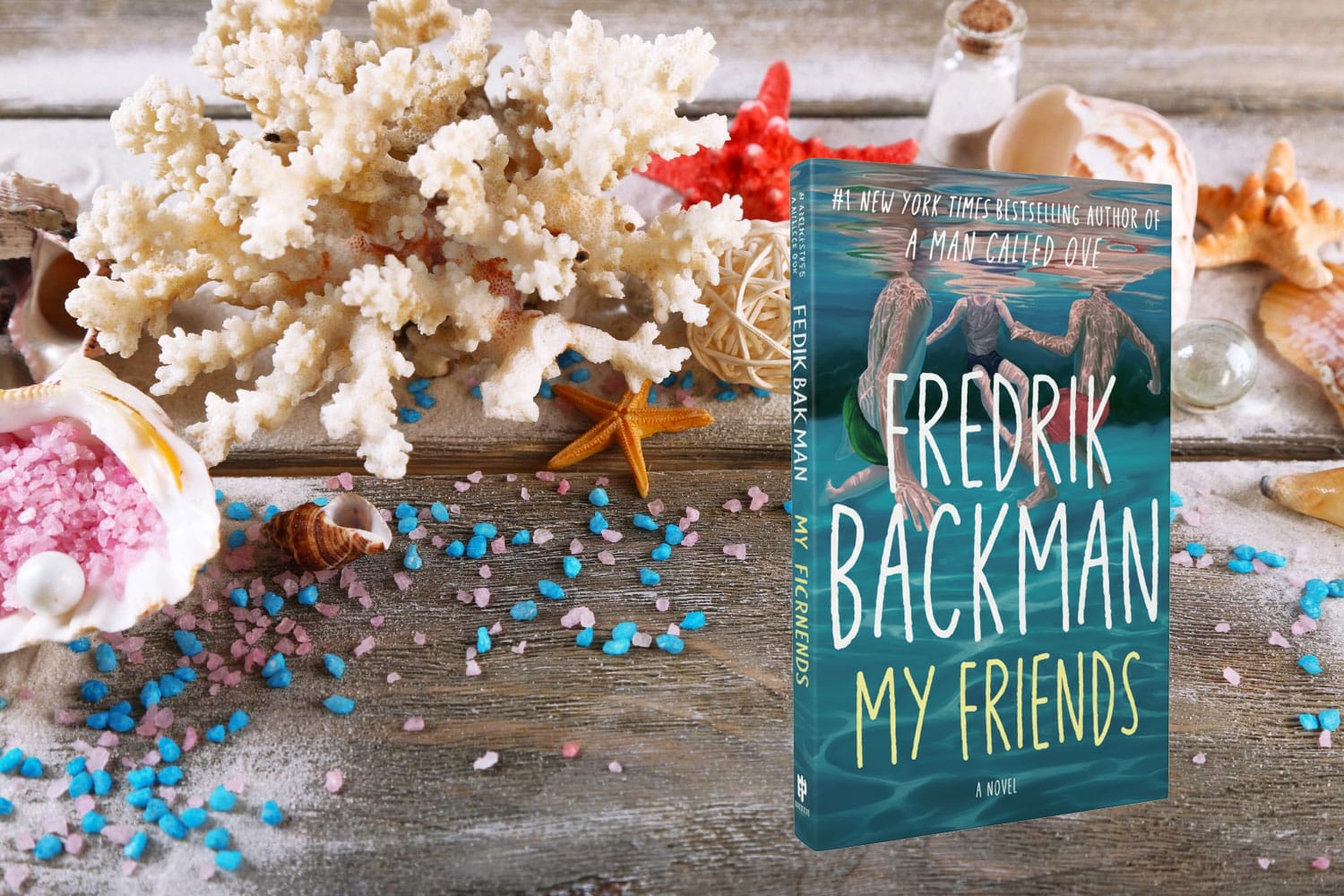
Pier-Inspired Table
Decorate the main table to resemble a weathered pier using wooden planks, scattering pebbles and shells to evoke the seaside where the friends spent their days together.
Framed Miniature Paintings
Place small, framed reproductions of “the artist’s” famous painting or other evocative artworks on stands throughout the space, referencing the central artwork and Louisa’s love for painting.
Friendship Photo Wall
Create a collage of book club members’ friend-group photos as a nod to the novel’s theme of found family and cherished memories.
Seashell Centerpieces
Fill glass bowls with shells and stones to echo the coastal setting and the characters’ time on the pier.
Artistic Place Cards
Handcraft name cards for each guest resembling mini sketchpads, highlighting Louisa’s connection to art and self-expression.
Journal Stack Display
Stack vintage journals or sketchbooks as display pieces, honoring Louisa and the artist’s habit of capturing their thoughts and drawings.
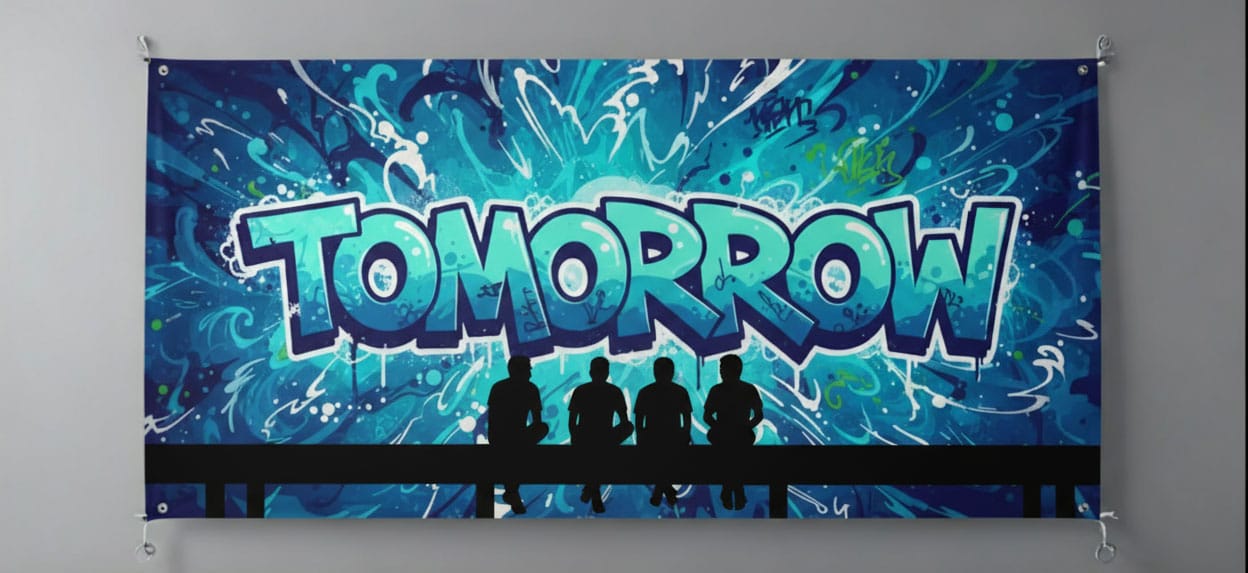
“Tomorrow” Banner
Hang a banner with the word “Tomorrow” to represent the friends’ hope for brighter days, symbolizing the book’s recurring promise.
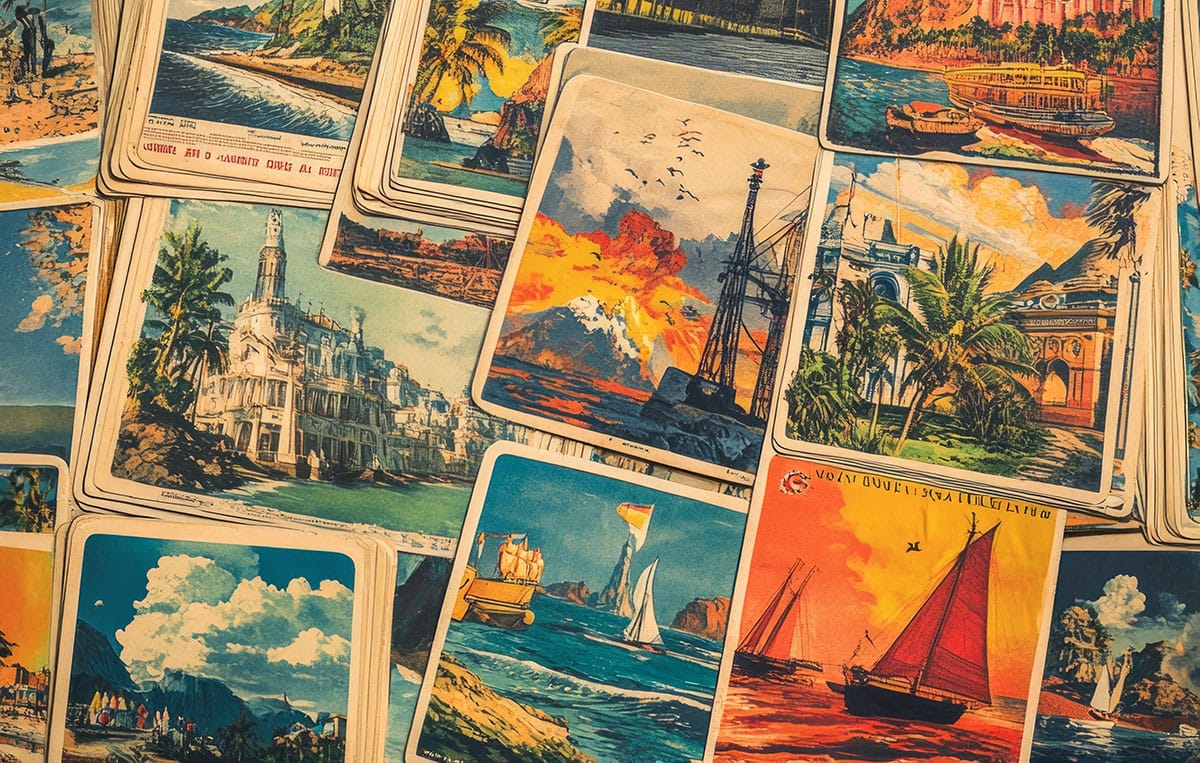
Suitcase and Postcard Corner
Set up an old suitcase filled with art postcards and notes to evoke Louisa’s journey and the treasured postcard she kept.
String Lights with Notes
Drape string lights, clipped with inspirational quotes about friendship, loss, and hope from the novel for gentle illumination and reflection.
Oceanscape Tablecloths
Use tablecloths printed with sea waves or ocean imagery, immersing guests in the seaside town setting.
“Found Family” Chair Signs
Label chairs with character names—Ted, Joar, Ali, Louisa—paying tribute to the found family spirit.
Memory Stones
Place flat stones at each seat for guests to write favorite memories or quotes, connecting to the motif of holding onto hope and moments.
DIY Art Corner
Invite guests to contribute a doodle or message to a collective mural or canvas—mirroring the artist’s powerful act of creation and shared experiences.

- "A Quirky Introduction" Game (In printable kit)
- "Found Family Roll Call" Activity (In printable kit)
- "Painting the Pier" Artistic Connection Game (In printable kit)

Here are a few creative menu ideas for a book club meeting inspired by My Friends, capturing both Swedish flavors and snacks referenced in the novel. Each item includes a brief description and is organized by category for convenience.
Appetizers
Gravlax on Crispbread
Cured salmon served on traditional Swedish crispbread, topped with mustard-dill sauce, offers a classic Scandinavian start to your meeting.
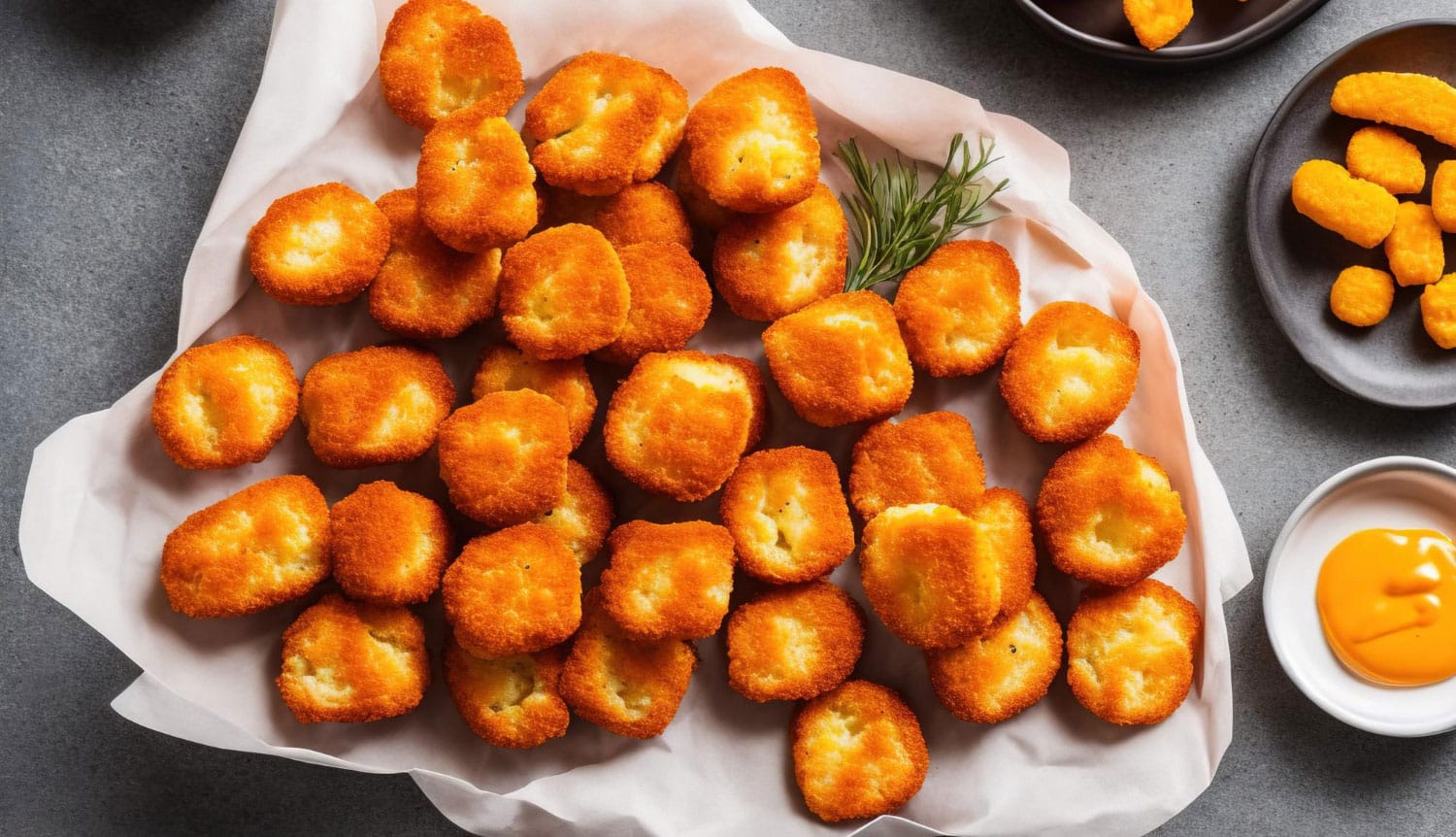
Mini Cheese Puffs
Light, airy cheese snacks that nod to the comfort and camaraderie central to the story, perfect for nibbling during lively discussions.
Pickled Herring Bites
A Swedish favorite, these tangy bites pair well with crackers and evoke the simple, communal spirit of shared meals in Backman's world.
Entrees

Swedish Meatballs with Toothpick Skewers
Rich, flavorful meatballs that can be accompanied by gravy or a side sauce. These are great finger foods that capture the warm hospitality of the novel’s friendships.
Swedish Tacos
A playful taco-night spread with toppings like minced meat, salad, and corn reflects both modern Swedish comfort food and group gatherings.
Kroppkakor (Swedish Potato Dumplings)
Dumplings stuffed with bacon and onion provide hearty, rustic fare reminiscent of cozy Scandinavian evenings.
Desserts
Princess Cake Slices
Sweden’s beloved green-marzipan–covered sponge cake, layered with custard and whipped cream, brings a festive and whimsical touch to the table.

Cinnamon Buns (Kanelbullar)
Sweet, spiced rolls are a staple of Swedish fika and symbolize warmth and the joy of simple pleasures. Perfect for sharing at a cozy book club gathering while discussing My Friends.
Almond Cheesecake with Berries
Creamy cheesecake topped with fresh strawberries and mint for a celebration-worthy ending to any bookish gathering.
Beverages
Aquavit
A caraway- and dill-flavored spirit typical at Swedish gatherings, aquavit offers a toasty cheers to friendship and storytelling.
Coca-Cola
A nod to favorite treats mentioned in the novel, Coke brings an element of nostalgia and universality to the drink selection.
Lingonberry Mocktail
Tart, red lingonberry juice served over ice is non-alcoholic, refreshing, and quintessentially Swedish.
Snacks
Cheese and Crispbread Board
A delightful platter of local cheeses with crispy Swedish knäckebröd embodies the ease and connection of Backman’s characters.
Chips and Sour Cream Dip
This easy, familiar snack encourages casual conversation and makes everyone feel at home.
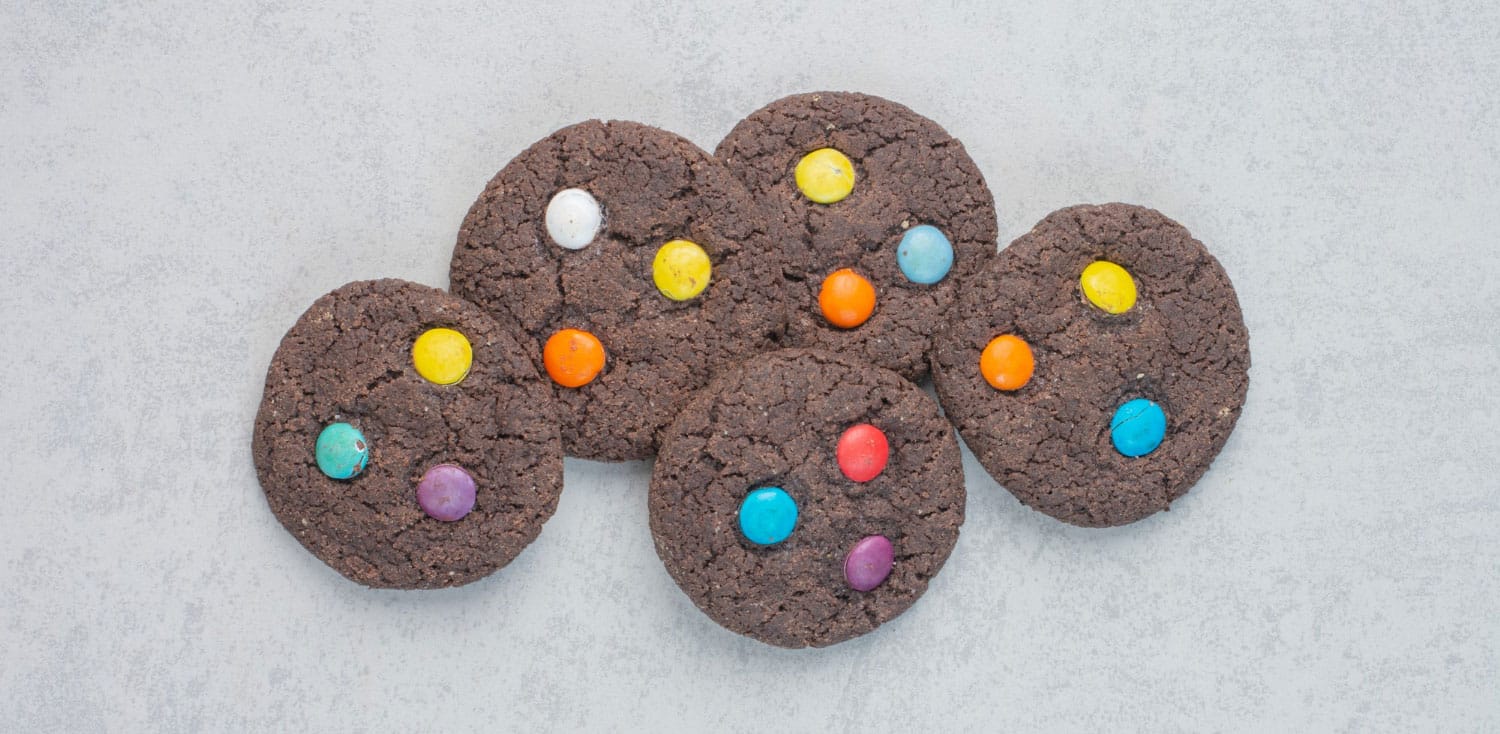
Artist Palette Chocolate Cookies
This is an easy way to simulate an artist's palette and add color to your table. Use your favorite chocolate chip or chocolate cookie recipe and add M&Ms to represent the "paint."
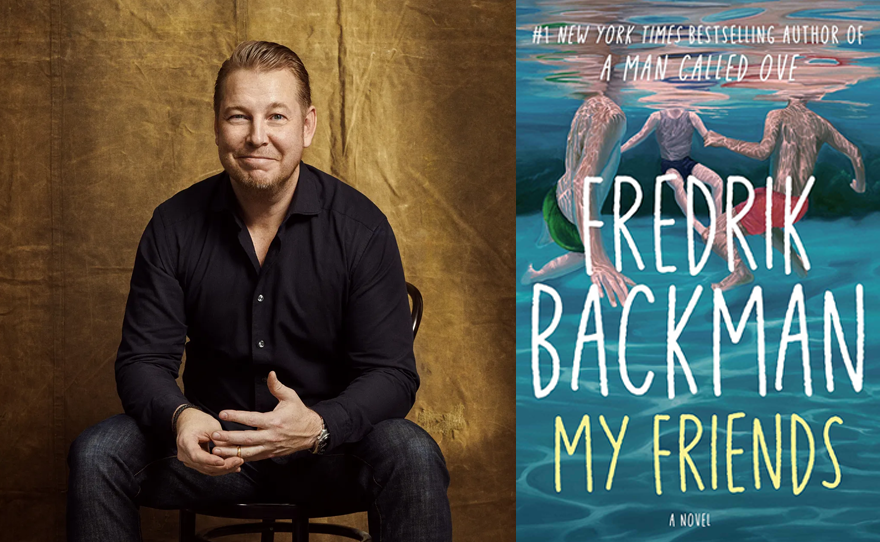
Get Fredrik Backman Books
Backman's best book yet! Masterful and profound.
Bookshop.org was created as a socially conscious alternative to Amazon, with the goal of helping local, independent bookstores thrive. This is why Readers With Wrinkles supports their efforts. Please join us in this effort by purchasing your next read here.
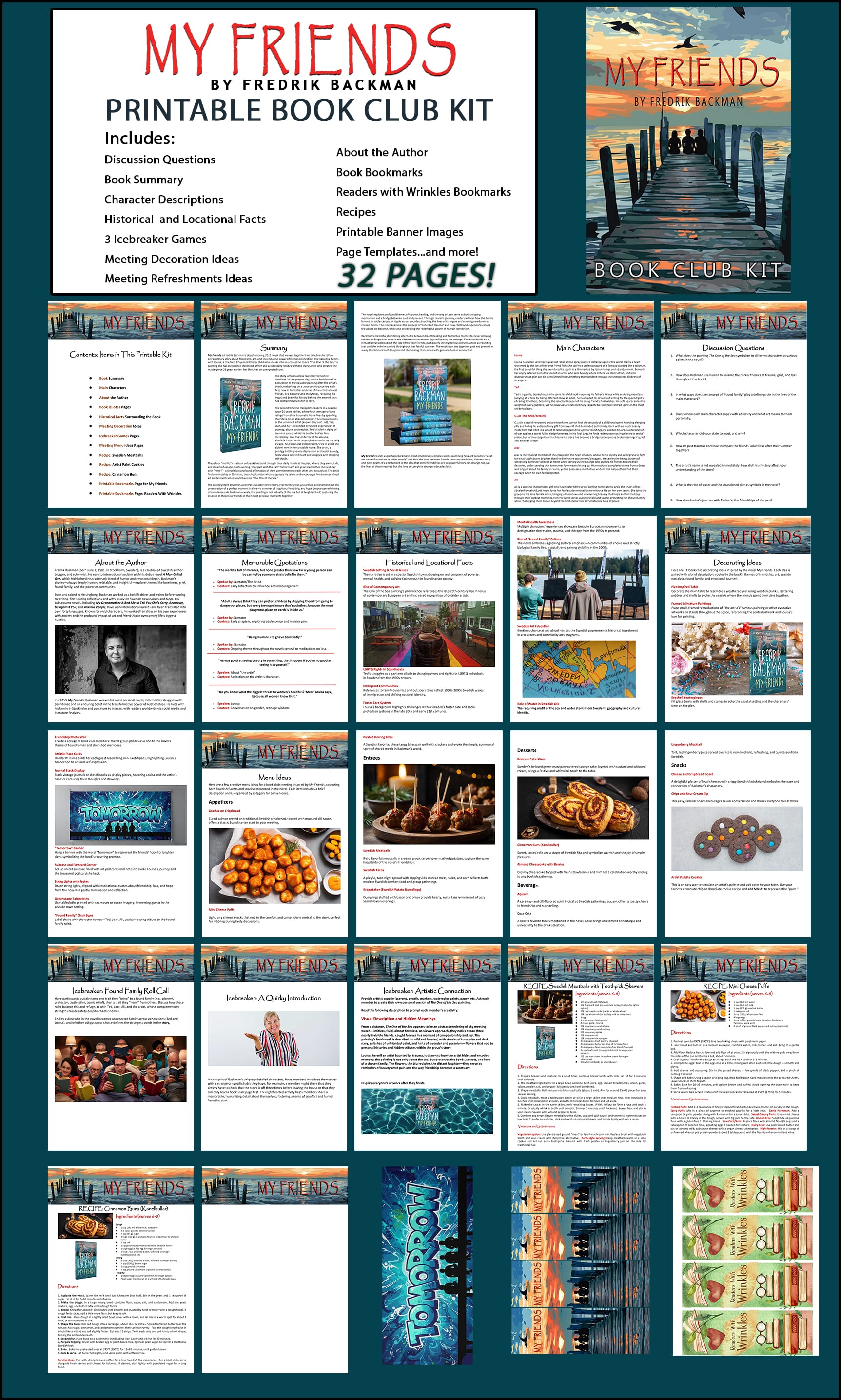
My Friends printable BOOK CLUB KIT
The RWW book club kits provide everything you need to organize a great meeting with insightful discussions. These resources simplify book club preparation with character lists, book quotes, refreshment suggestions, recipes, and carefully prepared book club questions!

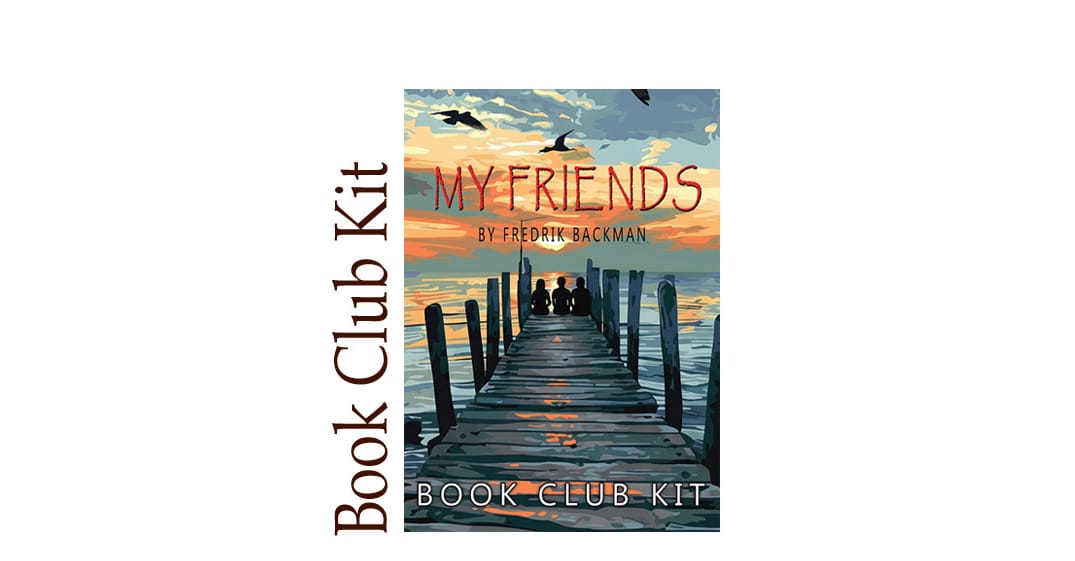
Comments